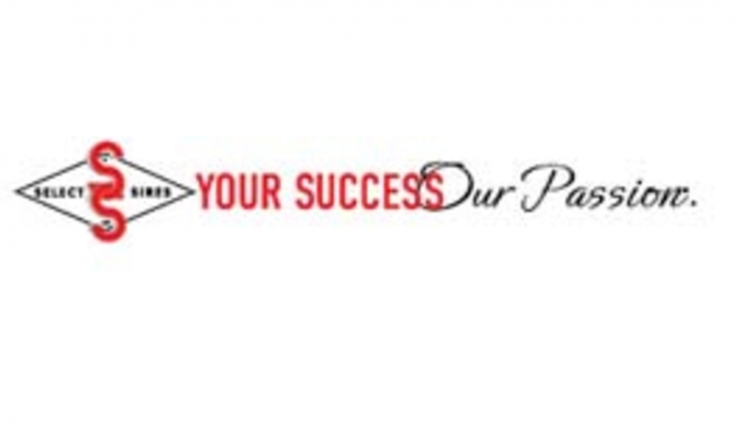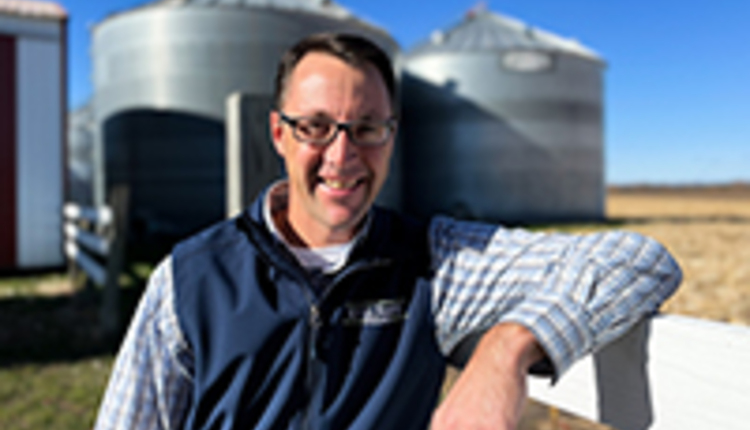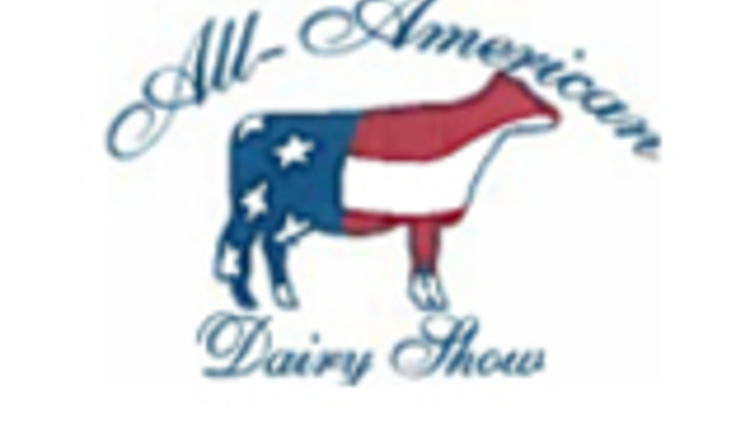The information below has been supplied by dairy marketers and other industry organizations. It has not been edited, verified or endorsed by Hoard’s Dairyman.
Much of the southwestern and western US has been plagued by extreme drought in 2022 causing not only issues with the quality of feed being harvested but also general ability to source and purchase forage economically.
“In such cases, many purchase less than ideal forages to fill in the gaps and try and get by. However, extreme drought stress can, in certain crops and cases, lead to accumulation of toxic compounds such as nitrates which can potentially render them unsafe to feed,” explains Katie Raver, Animal Nutrition and Field Support Specialist for Rock River Laboratory. She suggests certain considerations should be made when feeding drought-stressed forages that may be subject to nitrate accumulation.
Nitrates are converted to nitrate in the rumen which can impact how oxygen is transported in the blood, this can be a potentially fatal issue. “Nitrate accumulation typically occurs when nitrates taken up by the plant cannot be incorporated into amino acids,” explains Raver. “This process typically happens in the leaves of growing plants, however when photosynthesis and/or plant growth becomes, limited nitrates can begin to accumulate in the stalks of plants.”
Nitrate Accumulation
According to Raver, there are a variety of factors that can limit photosynthetic activity and plant growth including drought, freeze, lack of sun or excessive shading, disease, fertilization practices, soil conditions, and stage of growth. There can also be a sudden increase in nitrates when drought periods are followed by a rainfall event.
“Different plants are more susceptible to nitrate accumulation. Brassicas, corn, millet, sorghum, sorghum-sudangrass hybrids, oats, and cereal rye all have the potential to accumulate nitrates,” says Raver.
Figure 1 breaks down the safe levels of nitrates for different classes of cattle.
Figure 1. Nitrate guidelines
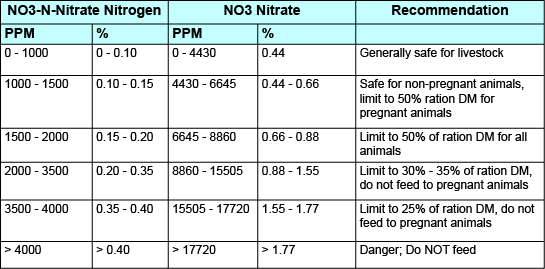
Management plays a large role in nitrate abatement. Immature crops tend to have higher nitrate levels, so harvesting at the correct maturity can help mitigate the risks. “If a growing forage contains high nitrate levels, increasing chop height to harvest less stalk can also help to decrease nitrate concentration,” shares Raver. “Ensiling forage can reduce concentrations by 40 to 60 percent because of the fermentation process.”
Despite what may be a case of limited forage availability, allowing the forage to fully ferment before feedout is necessary. “Use caution if grazing directly after a rain event when nitrates can accumulate. If pastures are grazed down and have limited forage availability, keep in mind weeds such as pigweed may accumulate nitrate quickly in certain conditions,” continues Raver.
She also advises diluting high nitrate forages with other feeds to help decrease the total diet nitrate content to a safe level. Note that water should be considered when calculating the total amount of nitrate intake.
Keeping feedout safe
When deciding to test for nitrates, it is important to not only consider the average of nitrates found in a particular forage, but also the range. The range of nitrates in tested samples can be quite large for different types of crops. Figure 2 outlines the mean, 15th and 85th percentiles of nitrate-N for common nitrate accumulating forages tested at Rock River Laboratory, Inc.
“The difference between the 15th and 85th percentile for the listed feeds is often quite wide,” shares Raver. “This highlights why simply looking at the average may not be a good way to determine the potential risk level of certain crops.”
Figure 2: Nitrate-N concentrations for common feedstuffs
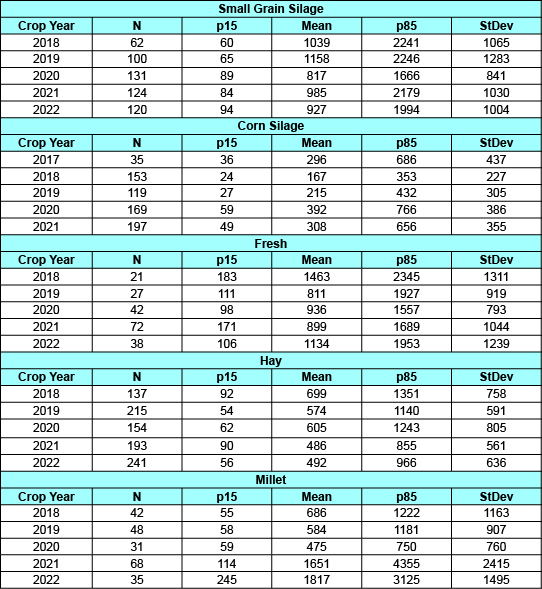
Similar to results found in a 2019 study, fresh chop was tested less frequently than hay samples, yet showed much higher levels. If there are concerns about potential nitrate levels in a forage, testing is an easy and quick way to evaluate these levels. Raver reminds growers and producers, “nitrate results are commonly reported as Nitrate-N (NO3-N) or total nitrate (NO3) ppm. Make sure to use the correct value when determining the safety of a given feed.”
When forage is extremely limited it can be tempting to utilize all and any forage sources that become available. Although oftentimes these can be great feed sources, if conditions and crop type are conducive to nitrate accumulation, testing should be considered before feedout. Knowing nitrate levels can help keep cattle safe and healthy.





